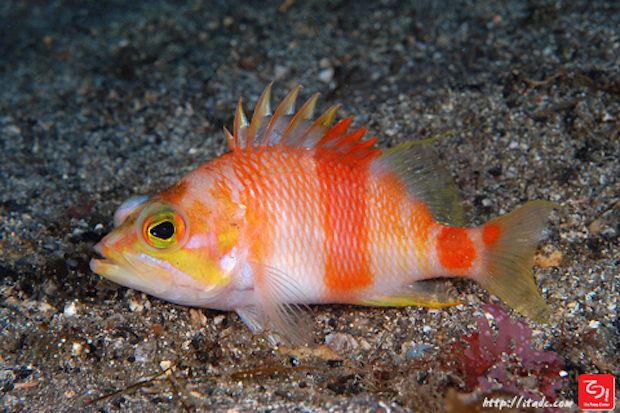This week’s Midweek Misnomer addresses the confusion between two Plectranthias species. Again with Plectranthias. We’re just having a good jive with the genus recently and the past three fish posts from me have been about this. The misidentification of various undescribed Plectranthias is rampant, but even with known species, mistakes in clarification often still arise. Such is the case with Plectranthias azumanus and P. kelloggi.

The genus Plectranthias is not entirely clear with so many discrepancies and new species popping up now and then. In 1980, a revision of the genus was published and in the paper, two species were classified into the new genus Zalanthias. P. kelloggi and P. azumanus were transferred and became known as Zalanthias kellogii and Z. azumanus, but the genus Plectranthias is still used interchangeably for the two species today.
We’re not sure of the taxonomic validity of Zalanthias, and we can’t seem to get our hands on the paper, but for all purpose and intent, and for simplicity, we will refer to the two species as Plectranthias. What we do know however, is that the two species are commonly mixed up (we’ve made this mistake in the past), and sometimes even used synonymously.

P. azumanus is an uncommon deepwater species that grows quite large for the genus. Like many deepwater Anthiines, it is not unusual to see them fished up from line reels in Japan and sold at the fish market. The species is characterized by its dichromatic red and white coloration, with vertical red bands along the body. The red banding is strongest and most evident near the rear two thirds of the body, and it starts from the 5th-6th dorsal spine. This bar runs complete, connecting the dorsal fin to the anal fin.
This species is sometimes offered for sale in the aquarium trade, and is not expensive. Interestingly, it is often labelled as P. kelloggi, a species on its own that is never seen in the trade.

P. kelloggi is another similar looking species that ranges in Japan and Hawaii. Superficially, it resembles P. azumanus but the barring is incomplete and does not reach to the ventral portions of the fish. Like P. azumanus, P. kelloggi is deepwater and can be found at depths ranging from 200-1000 ft. It is sometimes caught on the hook, but the fish never makes it to the aquarium trade.

P. kelloggi and P. azumanus share the characteristic of possessing filamentous extensions on the first two soft dorsal rays, and may sometimes develop extensions on the caudal fin. They’re big and very bass looking, which is unusual because the genus also plays host to some really small species that rarely get above two inches in size.
If anyone has information regarding the status of Zalanthias, please feel free to correct or inform us. Other than that, we hope this helps in clearing the miasmic confusion between “kelloggi” and “azumanus“.



